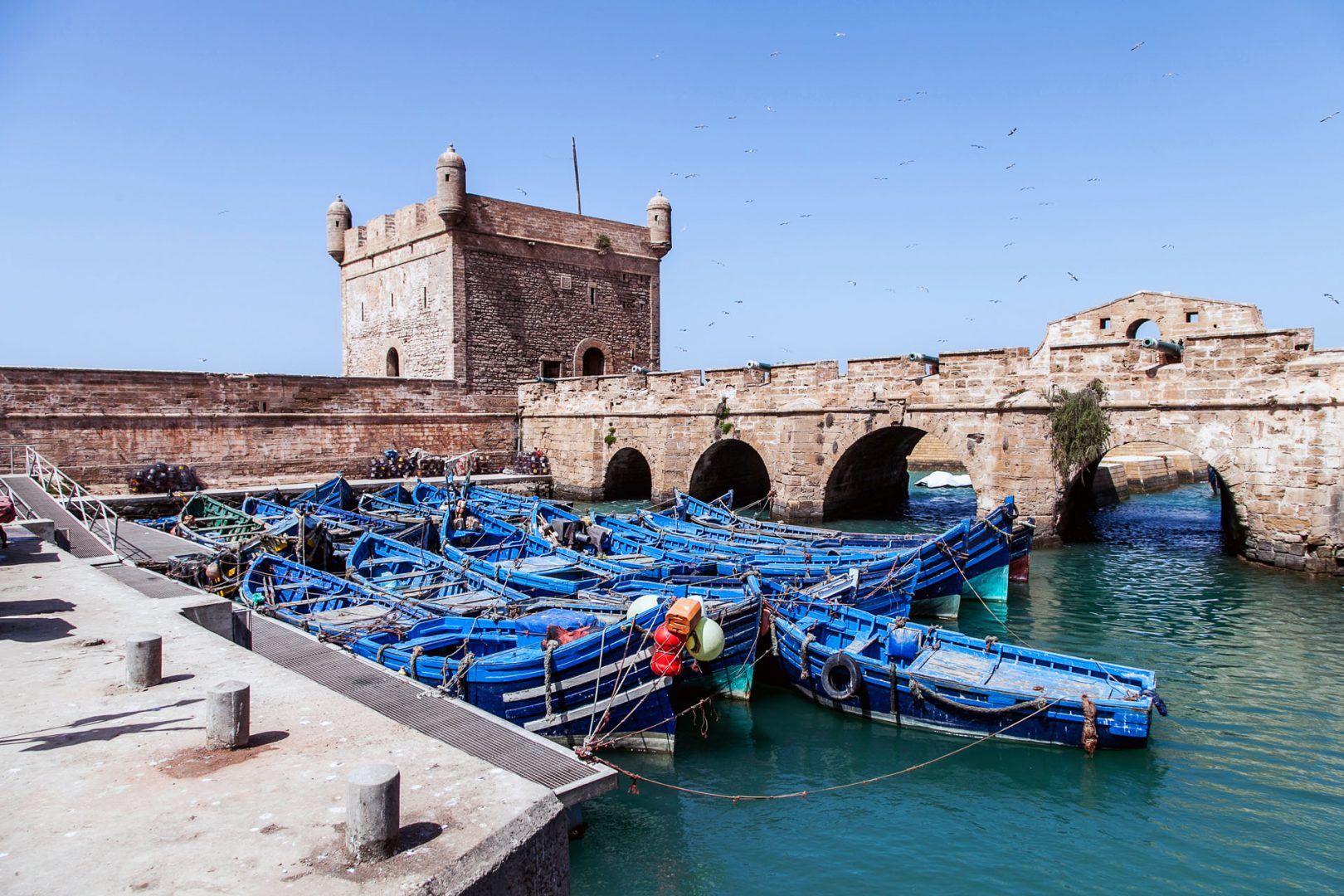Art galleries
On every corner we turned, there was an art to be found: Hokusai-style waves and fishermen painted on the walls, local galleries brimming with distinctive art styles and stalls spread out with local paintings of local scenes. Before dinner one evening, we stumbled down Rue Tetouan and into Galerie la Kasbah, an art gallery housed in a building which is a treasure in itself.
The converted riad is spread over three floors (including the rooftop), its spacious rooms filled with paintings, frames, sculptures, models; our imaginations could only run wild when we saw the stacks of unopened boxes. Our attentive shop assistant patiently accompanied us as we explored each room, and provided tidbits of commentary as we took in a particular item.
Eventually, we reached the third floor, essentially the rooftop that had a couple of rooms spanning one side. We gazed ahead at the sunset bobbing on the horizon sealine, and peering over the edge gave us a birds-eye view into the medina below.
It is truly galleries galore in Essaouira, offering a wide range of art styles, from surrealism and impressionism to calligraphy. Other art galleries worth checking out include Espace Othello (named after Orson Welles’ Othello, which was filmed here), and Galerie d’Art Frederic Damagaard, which also houses a nearby atelier workshop.
The port
The sky was purple, the cats sauntered along the low stone walls and gulls squawked overhead: we knew we were getting close to Essaouira’s port. Once we walked through the high stone arch entrance, we could see (and smell) the evening fish market in all its frenzied glory.
As we zigzagged between the clumped fishing tackle, the wind thrashing our hair across our faces, shoppers made their selections to take home or to have grilled on the spot and enjoy as a late-night snack.
The bustling fishing port is another of Essaouira’s accolades, with rows of small blue boats clacking in the harbour and fresh fish stalls jostling for space on the harbourside. You can also make the most of the port during the daytime, where visitors can climb the Skala du Port ramparts for impressive views.










